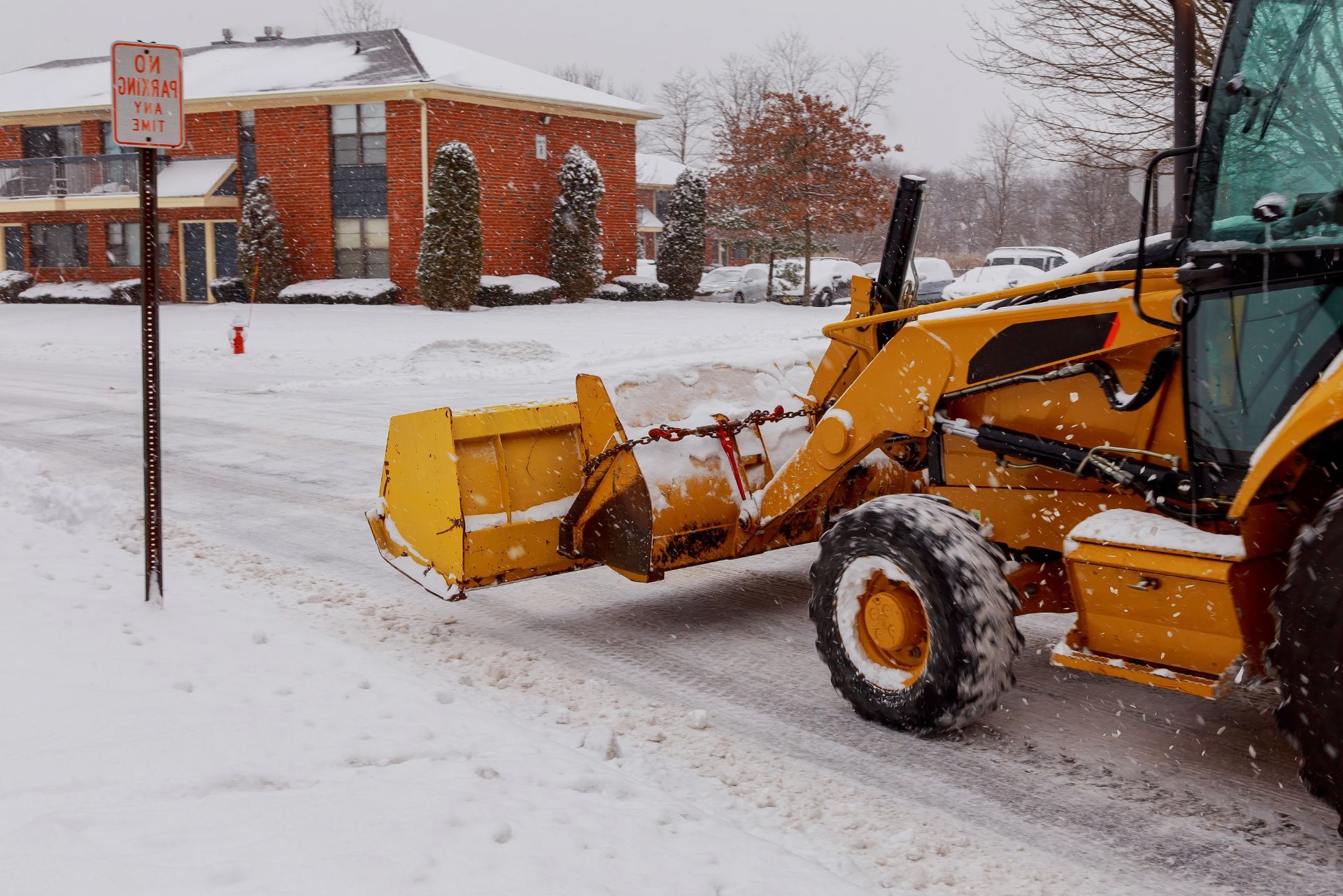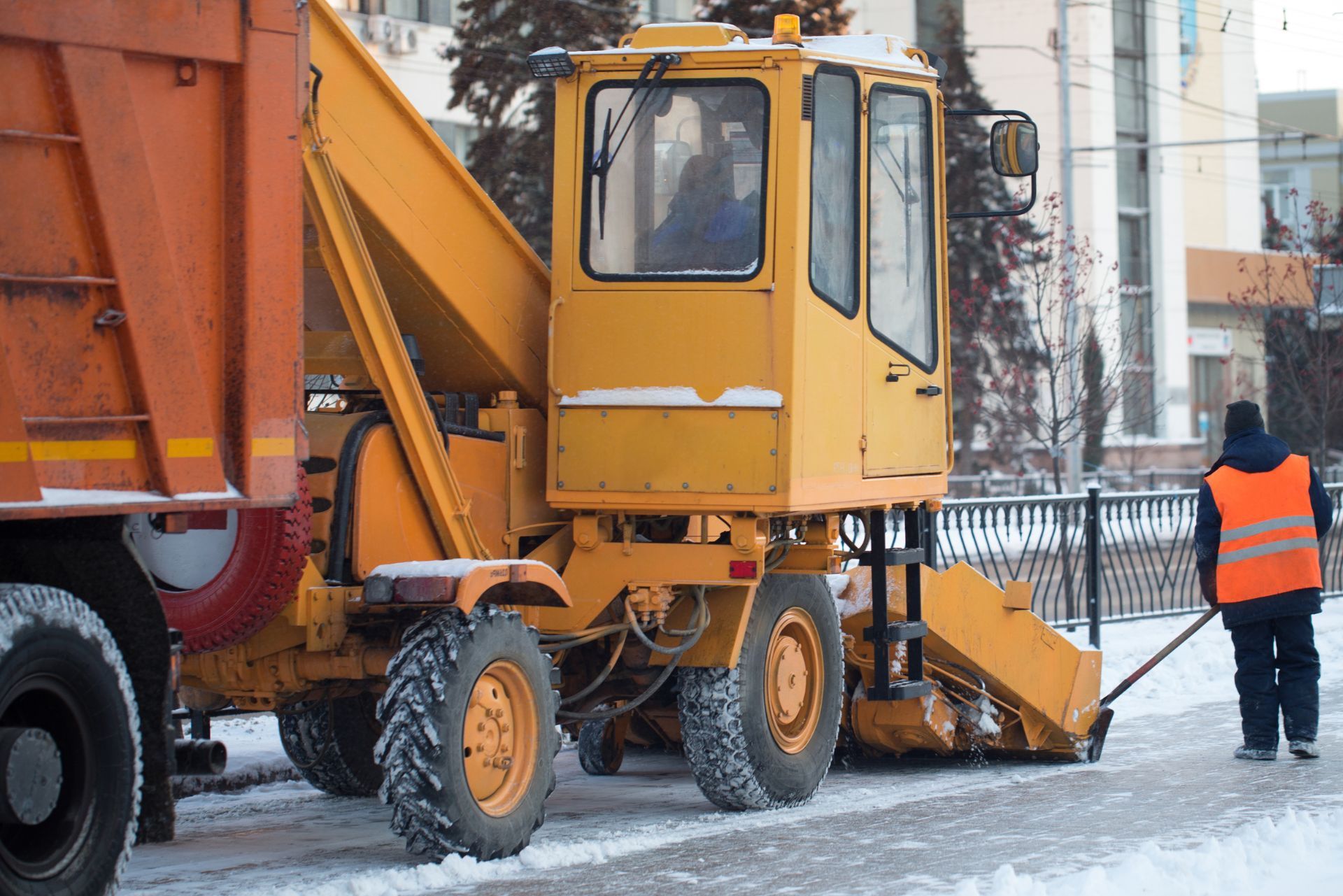Top 3 Recommended Policies

As winter approaches, the demand for snow plowing services in New York increases significantly. Snow plowing is essential for maintaining safe roadways and access to properties during heavy snowfall. However, operating a snow plow comes with its own set of risks and liabilities. This is where snow plow insurance becomes crucial. Understanding the ins and outs of snow plow insurance can help protect both your business and your assets.
What is Snow Plow Insurance?
Snow plow insurance is a specialized type of commercial insurance designed to protect snow removal businesses and contractors from various risks associated with their operations. This insurance typically covers vehicles, equipment, and liability related to snow plowing services. As winter storms can lead to unpredictable conditions, having the right insurance ensures that businesses can operate smoothly without the looming threat of financial disaster due to unforeseen incidents.
Types of Coverage
Snow plow insurance can include several types of coverage, each addressing different aspects of the business. These may include:
- General Liability Insurance: Protects against claims of bodily injury or property damage that may occur during snow removal operations.
- Commercial Auto Insurance: Covers vehicles used for snow plowing, including damages from accidents, theft, or vandalism.
- Equipment Insurance: Protects specialized snow removal equipment from damage or loss.
Why is Snow Plow Insurance Important?
Having snow plow insurance is not just a legal requirement; it is also a vital component of risk management. Without adequate insurance, a business could face significant financial losses in the event of an accident or damage claim. This coverage not only protects the business owner but also provides peace of mind to clients who may be concerned about potential liabilities. Moreover, in many regions, clients may specifically request proof of insurance before hiring snow removal services, making it a critical factor in securing contracts and maintaining a professional reputation.
Additionally, snow plow insurance can also encompass coverage for workers' compensation, which is essential for protecting employees who may be injured while on the job. Snow removal can be physically demanding and hazardous, with risks such as slips, falls, or equipment-related injuries. By ensuring that workers are covered, businesses not only comply with legal obligations but also foster a safer working environment, which can lead to higher employee morale and retention rates. Furthermore, some policies may offer coverage for lost income due to business interruptions caused by severe weather, allowing companies to navigate the financial challenges that winter storms can bring.

Key Considerations When Choosing Snow Plow Insurance
Choosing the right snow plow insurance can be a daunting task. There are several factors to consider to ensure that the coverage meets the specific needs of a snow removal business.
Assessing Your Risks
Before selecting an insurance policy, it is essential to assess the risks associated with snow plowing. This includes evaluating the types of services offered, the equipment used, and the geographic areas served. Understanding these risks will help in selecting a policy that provides adequate coverage. For instance, if your business operates in regions prone to heavy snowfall or icy conditions, you may need a policy that covers additional liabilities related to accidents or damages that could occur during operations. Additionally, consider the potential for property damage or bodily injury claims, as these can significantly impact your financial stability if not properly insured.
Comparing Policies
Not all insurance policies are created equal. It is crucial to compare different policies from various providers. Look for coverage limits, deductibles, and exclusions that may affect your business. Additionally, consider the reputation of the insurance company and their claims process. Reading customer reviews and testimonials can provide valuable insight into how well a company handles claims and supports its clients during difficult times. Furthermore, inquire about any additional coverage options, such as equipment breakdown or liability for subcontractors, which can further protect your business from unforeseen events.
Consulting with an Insurance Agent
Working with an
insurance agent who specializes in commercial insurance can be beneficial. They can provide insights into the best coverage options available and help tailor a policy to fit the unique needs of a snow plow business. An experienced agent can also guide you through the nuances of different policies, ensuring that you understand the terms and conditions. Moreover, they can assist in navigating any regulatory requirements specific to your area, which may influence the type of coverage you need. This personalized approach can save you time and money, as well as provide peace of mind knowing that your business is adequately protected against the unpredictable nature of winter weather.
Common Exclusions in Snow Plow Insurance
While snow plow insurance can provide extensive coverage, it is essential to be aware of common exclusions that may apply. Understanding these exclusions can help prevent unexpected gaps in coverage.
Weather-Related Damage
Some policies may exclude coverage for damage caused by severe weather conditions, such as blizzards or ice storms. It is crucial to read the fine print and clarify these exclusions with the insurance provider. For instance, if a snow plow is damaged during a storm while attempting to clear a road, the insurer may argue that the storm itself was an excluded peril. This can leave operators financially vulnerable, especially during peak winter months when such events are more likely to occur. Therefore, it is advisable to explore additional riders or endorsements that provide coverage for extreme weather scenarios, ensuring that your equipment is protected against the unpredictable nature of winter.
Negligence Claims
Claims arising from negligence, such as failing to clear snow in a timely manner or not following safety protocols, may not be covered. Businesses must ensure they adhere to industry standards to avoid such claims. This includes regularly training employees on safe snow removal practices and maintaining equipment to prevent accidents. Additionally, documentation of snow removal activities, including timestamps and photographs, can serve as valuable evidence in the event of a dispute. By maintaining thorough records, operators can demonstrate their commitment to safety and compliance, potentially mitigating the impact of any negligence claims that may arise.
Cost of Snow Plow Insurance
The cost of snow plow insurance can vary significantly based on several factors, including the size of the business, the number of vehicles, and the level of coverage required. Understanding these factors can help business owners budget effectively. Additionally, the geographic location of the business plays a crucial role; areas that experience heavy snowfall may have higher premiums due to the increased likelihood of accidents and claims during winter months.
Factors Influencing Cost
- Business Size: Larger businesses with more vehicles and employees may face higher premiums due to increased risk. This is particularly true if the business operates in multiple locations or has a fleet that is on the road for extended periods.
- Coverage Levels: Higher coverage limits generally result in higher premiums. It is essential to balance adequate coverage with affordability. Business owners should consider not only liability coverage but also comprehensive and collision coverage to protect against various risks.
- Claims History: A history of claims can lead to increased premiums. Maintaining a good claims record can help keep costs down. Implementing safety training and regular maintenance checks can contribute to a lower likelihood of incidents, thereby positively impacting insurance costs.
Average Premiums
On average, snow plow insurance premiums can range from $1,000 to $5,000 annually, depending on the factors mentioned above. It is advisable to obtain quotes from multiple providers to find the best rate. Furthermore, some insurance companies may offer discounts for bundling policies or for businesses that have implemented safety programs, which can further reduce overall costs. It’s also worth noting that as the demand for snow removal services increases during harsh winters, insurance rates may fluctuate, reflecting the market conditions and competition among providers.
How to File a Claim
In the unfortunate event of an accident or damage, knowing how to file a claim is essential. The claims process can vary by insurance provider, but there are general steps that most businesses should follow. Understanding these steps can help alleviate some of the stress associated with the claims process and ensure that you receive the compensation you deserve in a timely manner.
Documenting the Incident
Before filing a claim, it is crucial to document the incident thoroughly. This includes taking photographs, collecting witness statements, and gathering any relevant information that may support the claim. Additionally, it is wise to keep a detailed account of the events leading up to the incident, as well as any immediate actions taken afterward. This narrative can provide context that may be beneficial during the claims process, helping to clarify the circumstances surrounding the incident.
Contacting Your Insurance Provider
Once the incident is documented, the next step is to contact the insurance provider. Most companies have a dedicated claims department that can guide policyholders through the process. Be prepared to provide all necessary documentation and details regarding the incident. It is also advisable to familiarize yourself with your policy coverage beforehand, as this knowledge can empower you to ask informed questions and understand what to expect in terms of coverage limits and deductibles.
Follow Up
After filing the claim, it is important to follow up regularly with the insurance provider to check on the status of the claim. This ensures that the process is moving along and helps address any additional information that may be required. Establishing a timeline for follow-ups can be beneficial; consider setting reminders to check in every few days or weekly. Keeping a record of all communications, including dates, times, and the names of representatives you speak with, can also be helpful in case any disputes arise later in the process.
Maintaining Your Snow Plow Insurance
Once snow plow insurance is in place, it is essential to maintain it properly. Regular reviews and updates can help ensure that the coverage remains adequate as the business evolves.
Annual Policy Review
Conducting an annual review of the insurance policy is a good practice. This allows business owners to assess whether their coverage needs have changed due to factors such as business growth, changes in equipment, or shifts in service offerings. For instance, if a business has recently expanded its fleet or added new types of snow removal services, it may require additional coverage to protect against new risks. Additionally, reviewing the policy can uncover any gaps in coverage that could leave the business vulnerable during peak winter months.
Staying Informed on Industry Changes
The insurance industry is constantly evolving, and staying informed about changes in regulations, coverage options, and best practices is crucial. This knowledge can help business owners make informed decisions regarding their insurance needs. Engaging with industry associations, attending seminars, or subscribing to relevant newsletters can provide valuable insights into emerging trends and legislative updates that could impact snow plow operations. Moreover, understanding the nuances of new insurance products or endorsements can empower business owners to tailor their policies more effectively, ensuring comprehensive protection against potential liabilities.
Documenting Changes and Claims
Another vital aspect of maintaining snow plow insurance is the meticulous documentation of any changes to equipment or service offerings, as well as any claims made during the season. Keeping detailed records not only aids in the renewal process but also provides a clear history of operations that can be beneficial during audits or when negotiating with insurance providers. For instance, if a claim is filed due to an accident, having comprehensive documentation can expedite the claims process and help ensure that the business receives the appropriate compensation without unnecessary delays.
Engaging with an Insurance Agent
Regular communication with an insurance agent who specializes in commercial vehicle insurance can also enhance the maintenance of snow plow insurance. These professionals can provide tailored advice based on the specific needs of the business and help identify any additional coverages that may be beneficial. They can also assist in navigating the complexities of policy language, ensuring that business owners fully understand their rights and responsibilities. By fostering a strong relationship with an insurance agent, business owners can stay proactive in managing their insurance portfolio, ultimately leading to better protection and peace of mind during the demanding winter months.

Conclusion
Snow plow insurance is an essential aspect of running a snow removal business in New York. Understanding the various types of coverage, the importance of assessing risks, and the process of filing claims can help ensure that businesses are adequately protected. By taking the time to choose the right policy and maintain it properly, snow plowing contractors can operate with confidence, knowing they are safeguarded against potential liabilities.
As winter approaches, ensuring that snow plow insurance is in place is a proactive step that can save business owners from significant financial burdens down the line. Whether operating a small local business or a larger enterprise, investing in the right insurance coverage is a critical component of success in the snow removal industry.
Contact Us
Phone
Location

